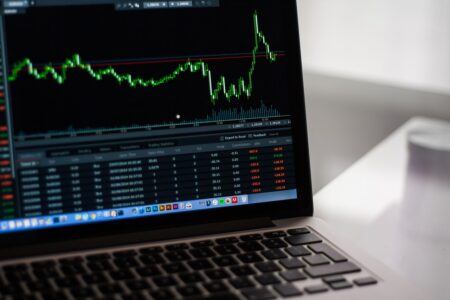Introduction
Welcome to our comprehensive price analysis report for Bitcoin (BTC) as of June 9, 2023. This report is based on price data, technical indicators, and moving average data sourced from Binance at 18:20:02 UTC. We delve into the intricate dynamics of BTC’s price, volume, and key technical indicators. Whether you’re a seasoned trader or a curious observer, this report offers valuable insights into BTC’s performance on this day. So, let’s dive in and explore the market sentiment for Bitcoin.
Price and Volume
The current price of BTC is $26,463.0, with a slight decrease of -$16.7 (-0.06%) from the previous price. The volume of BTC traded is 27,590, indicating a high level of activity and interest in this cryptocurrency. Volume refers to the number of shares or contracts traded in a security or market during a given period. The day’s range is between $26,269.9 and $26,783.3, showing a relatively small fluctuation in price. The day’s range refers to the difference between the highest and lowest prices of a security during a trading day.
Technical Analysis
The overall technical analysis for BTC is showing a sell signal. This is based on the 1 buy signal and 5 sell signals from the technical indicators, and 3 buy signals and 9 sell signals from the Moving Averages. Technical analysis is a trading discipline employed to evaluate investments and identify trading opportunities by analyzing statistical trends gathered from trading activity, such as price movement and volume.
Technical Indicators
The RSI(14) is at 45.939, indicating a neutral signal as it’s below the midpoint. RSI (Relative Strength Index) is a momentum oscillator that measures the speed and change of price movements. The STOCH(9,6) is at 98.551, indicating an overbought condition, which could suggest a potential price correction in the near future. STOCH (Stochastic Oscillator) is a momentum indicator comparing a particular closing price of a security to a range of its prices over a certain period of time. The STOCHRSI(14) is at 5.623, indicating an oversold condition, which could suggest a potential price correction in the near future. STOCHRSI is an indicator used in technical analysis that ranges between zero and one and is created by applying the Stochastic Oscillator formula to a set of Relative Strength Index (RSI) values. The MACD(12,26) is at 13.200, indicating a buy signal. MACD (Moving Average Convergence Divergence) is a trend-following momentum indicator that shows the relationship between two moving averages of a security’s price.
The ADX(14) is at 16.659, suggesting a neutral signal. ADX (Average Directional Index) is used to quantify trend strength. The Williams %R is in the overbought territory. Williams %R is a momentum indicator that measures overbought and oversold levels. The CCI(14) is at -69.1969, indicating a sell signal. CCI (Commodity Channel Index) is a versatile indicator that can be used to identify a new trend or warn of extreme conditions. The ATR(14) suggests less volatility, which could mean smaller price swings. ATR (Average True Range) is a technical analysis indicator that measures market volatility by decomposing the entire range of an asset price for that period.
The Highs/Lows(14), Ultimate Oscillator, and ROC are all indicating sell signals. The Highs/Lows is a simple indicator that calculates the highestand lowest prices over a specified period. The Ultimate Oscillator is a technical indicator that uses weighted sums of three oscillators (usually 7, 14, and 28 period time frames) to reduce volatility and false trading signals. ROC (Rate of Change) is a momentum oscillator, which measures the percentage change between the current price and the n period past price.
Moving Averages
The Moving Averages are indicating a sell signal with 3 buy signals and 9 sell signals. This could suggest a potential bearish trend in the longer term. Moving Averages smooth out price data to form a trend following indicator. They do not predict price direction, but rather define the current direction with a lag. The MA50 and MA100 are below the current price, indicating a bullish short-term trend. However, the MA5, MA10, MA20, and MA200 are above the current price, indicating a bearish long-term trend. The numbers (5, 10, 20, 50, 100, 200) refer to the period used to calculate the moving average.
Pivot Points
The pivot points are used to identify potential support and resistance levels. Support and resistance levels are key concepts in technical analysis that denote the price levels at which a financial instrument’s price tends to stop and reverse. The current price is hovering around the S1 and R1 levels in all the pivot point calculations, suggesting that these are key levels to watch for potential price movements. The pivot point itself is a form of technical analysis indicator, used to determine the overall trend of the market over different time frames. The pivot point is calculated as an average of significant prices (high, low, close) from the performance of a market in the prior trading period. If the market in the following period trades above the pivot point, it is usually evaluated as a bullish sentiment, whereas trading below the pivot point is seen as bearish.
Conclusion
In summary, the Bitcoin (BTC) price analysis for June 9, 2023, based on data from Binance at 14:20:02 UTC, presents a picture leaning toward sell. While the MACD suggests a buy, the majority of technical indicators and moving averages hint at a potential bearish trend. This divergence underscores the importance of a balanced and informed approach to trading and investing. As always, these signals should be considered in the context of your overall investment strategy and risk tolerance. Remember, the world of cryptocurrency is highly volatile, and while technical analysis can provide valuable insights, it’s only one piece of the puzzle.
Featured Image Credit: Photo / illustration by “Dylan Calluy” via Unsplash









